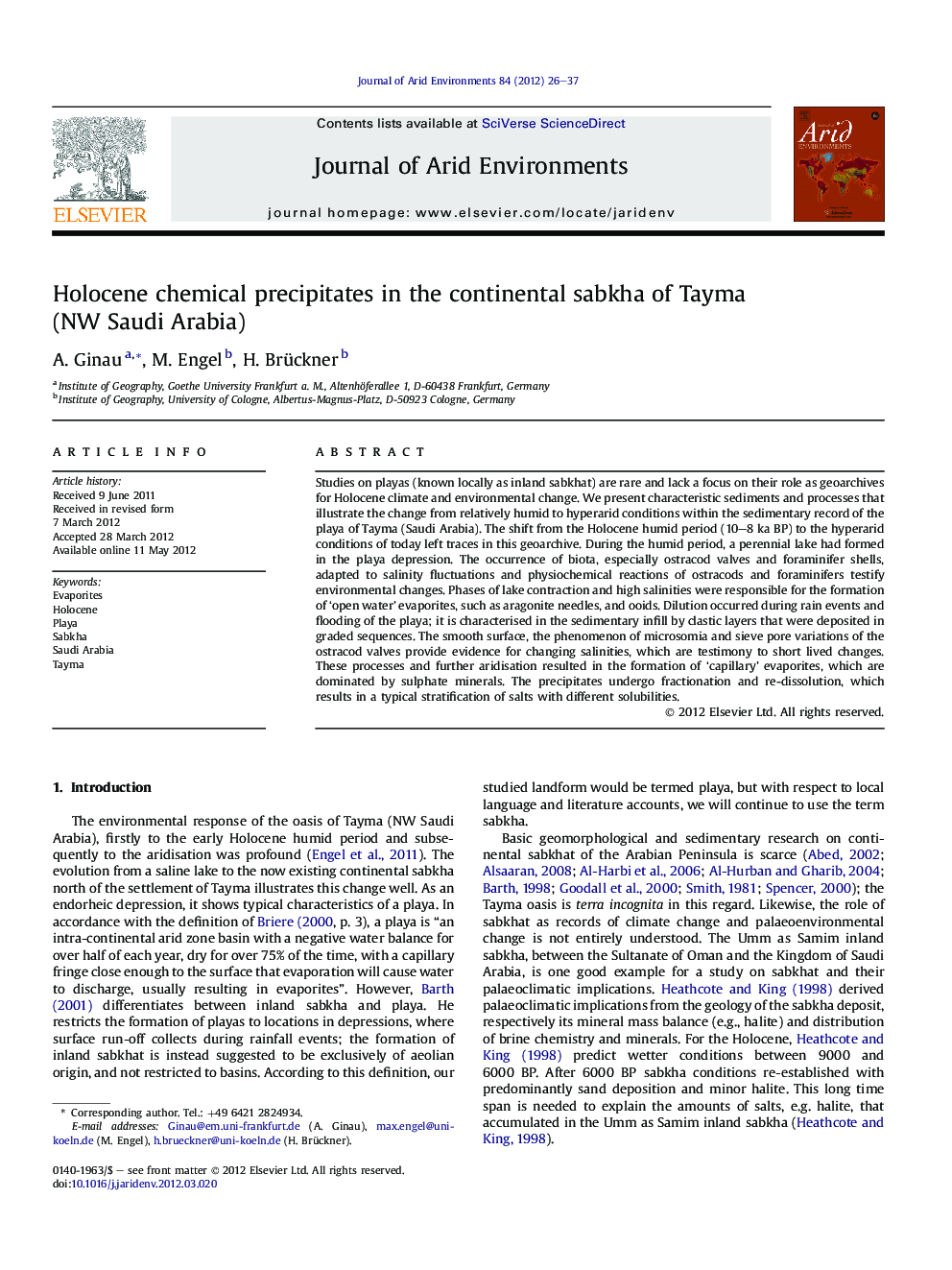| Article ID | Journal | Published Year | Pages | File Type |
|---|---|---|---|---|
| 4393269 | Journal of Arid Environments | 2012 | 12 Pages |
Studies on playas (known locally as inland sabkhat) are rare and lack a focus on their role as geoarchives for Holocene climate and environmental change. We present characteristic sediments and processes that illustrate the change from relatively humid to hyperarid conditions within the sedimentary record of the playa of Tayma (Saudi Arabia). The shift from the Holocene humid period (10–8 ka BP) to the hyperarid conditions of today left traces in this geoarchive. During the humid period, a perennial lake had formed in the playa depression. The occurrence of biota, especially ostracod valves and foraminifer shells, adapted to salinity fluctuations and physiochemical reactions of ostracods and foraminifers testify environmental changes. Phases of lake contraction and high salinities were responsible for the formation of ‘open water’ evaporites, such as aragonite needles, and ooids. Dilution occurred during rain events and flooding of the playa; it is characterised in the sedimentary infill by clastic layers that were deposited in graded sequences. The smooth surface, the phenomenon of microsomia and sieve pore variations of the ostracod valves provide evidence for changing salinities, which are testimony to short lived changes. These processes and further aridisation resulted in the formation of ‘capillary’ evaporites, which are dominated by sulphate minerals. The precipitates undergo fractionation and re-dissolution, which results in a typical stratification of salts with different solubilities.
► Inland sabkhat are endorheic basins filled with clastic deposits and evaporites. ► At Tayma, microfossils, ooids and “open water evaporites” indicate a palaeo-lake. ► In-depth EDX and XRD investigations helped to decipher recent sedimentary processes. ► Salts precipitating in the sabkha matrix reveal a typical stratification.
